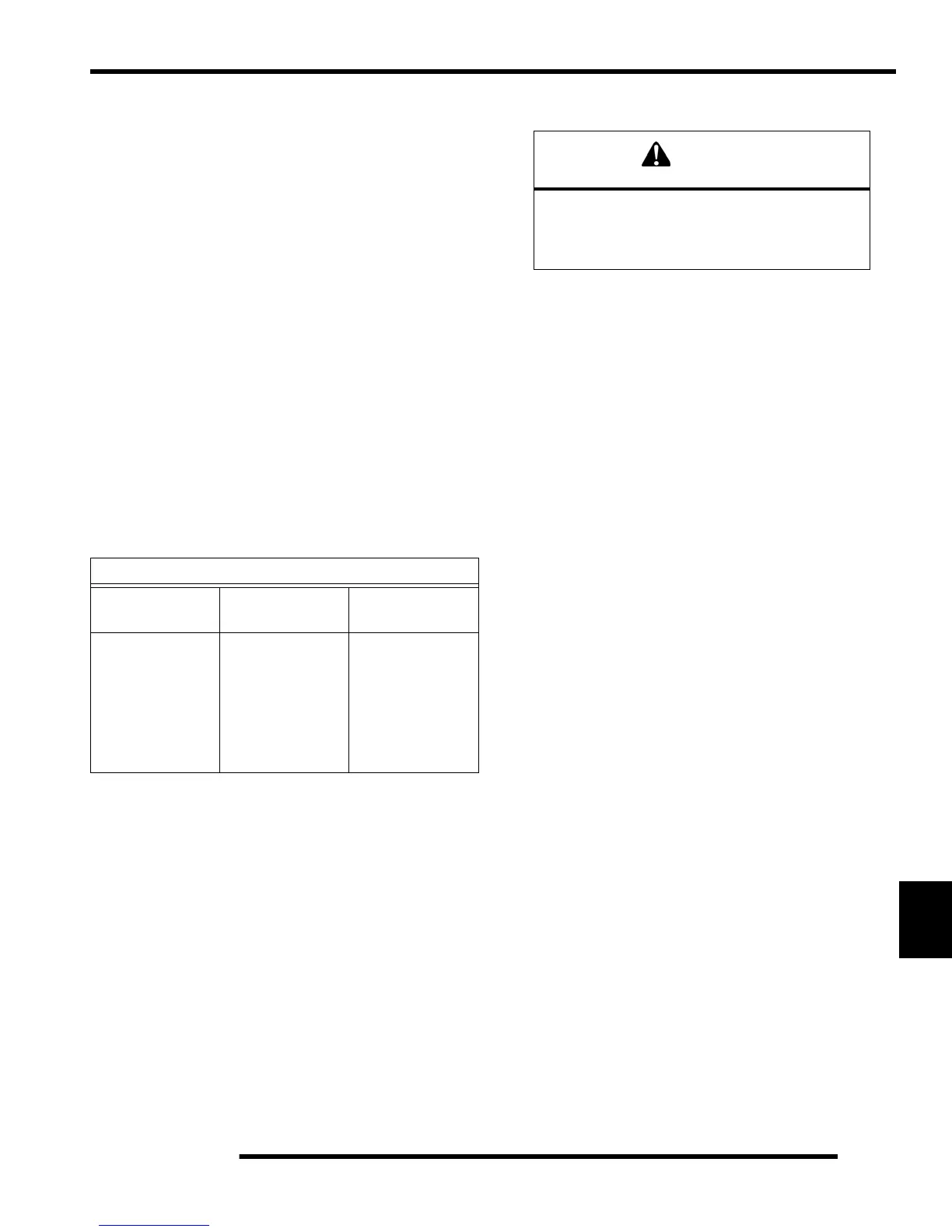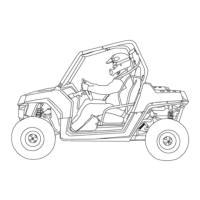10.29
ELECTRICAL
10
Battery Testing
Whenever a service complaint is related to either the starting or
charging systems, the battery should be checked first.
Following are two tests which can easily be made on a Sealed
Low Maintenance battery to determine its condition: OCV Test
and a Load Test.
OCV - Open Circuit Voltage Test
Battery voltage should be checked with a digital multitester.
Readings of 12.8 volts or less require further battery testing and
charging. See charts and Load Test.
NOTE: Lead-acid batteries should be kept at or near
a full charge as possible. If the battery is stored or
used in a partially charged condition, or with low
electrolyte levels, hard crystal sulfation will form on
the plates, reducing the efficiency and service life of
the battery.
NOTE: Use a voltmeter or multimeter to test batter
voltage.
Load Test
NOTE: This test can only be performed on machines
with electric starters. This test cannot be performed
with an engine or starting system that is not working
properly.
A battery may indicate a full charge condition in the OCV test
and the specific gravity test, but still may not have the storage
capacity necessary to properly function in the electrical system.
For this reason, a battery capacity or load test should be
conducted whenever poor battery performance is encountered.
To perform this test, hook a multitester to the battery in the same
manner as was done in the OCV test. The reading should be 12.6
volts or greater. Engage the starter and observe the battery
voltage while cranking the engine. Continue the test for 15
seconds. During cranking the observed voltage should not drop
below 9.5 volts. If the beginning voltage is 12.6 volts or higher
and the cranking voltage drops below 9.5 volts during the test,
replace the battery.
Off-Season Storage
To prevent battery damage during extended periods of non-use,
the following basic battery maintenance items must be
performed:
• Remove the battery from the machine and wash the
case and battery tray with a mild solution of baking
soda and water. Rinse thoroughly with fresh water after
cleaning.
• Using a wire brush, remove any corrosion from the
cables and terminals.
• Charge at a rate no greater than 1/10 of the battery’s
amp/hr capacity.
• Store the battery either in the machine with the cables
disconnected, or store in a cool place.
NOTE: Stored batteries lose their charge at the rate
of 1% per day. Recharge to full capacity every 30 to
60 days during a non-use period. If the battery is
stored during the winter months, electrolyte will
freeze at higher temperatures as the battery
discharges.
OPEN CIRCUIT VOLTAGE
State of Charge
Maintenance
Free
YuMicron™
Type
100% 13.0 V 12.70 V
75% Charged 12.80 V 12.50 V
50% Charged 12.50 V 12.20 V
25% Charged 12.20 V 12.0 V
0% Charged less than 12.0 V less than 11.9 V
* At 80° F
NOTE: Subtract .01 from the specific gravity reading at 40° F.
CAUTION
To prevent shock or component damage,
remove spark plug high tension leads and
connect securely to engine ground
before proceeding.

